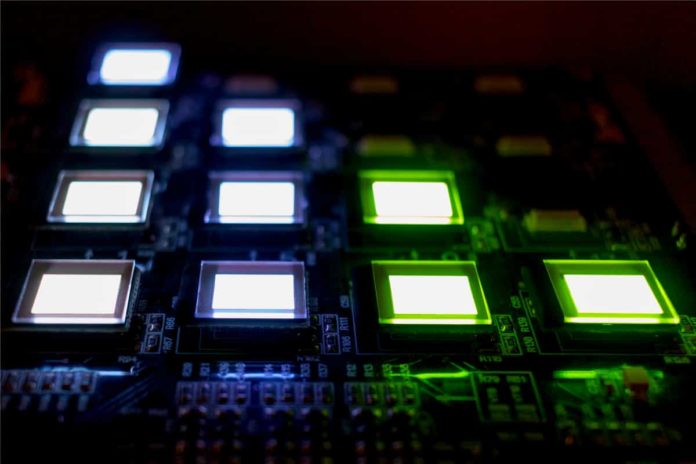Molecular Complex for OLED Displays Created By Chemists
A RUDN University chemist has now synthesized fluorescent compounds with “merry-go-round” molecules complex that can be used to create economical displays with organic-LEDs i.e, OLED. The nucleus of this molecule is a triangle of silver/copper atoms, & the organic elements are bound to it through phosphorus atoms that rotate around them. The molecular geometry may allow scientists to create more efficient Organic LED screens. The study article is published in ‘Inorganic Chemistry’.
Displays with Organic LEDs differ from other modern types of displays such as plasma & LCD displays. Organic LEDs have higher brightness, contrast & lower power consumption. However, these are more expensive, and the raw material for their production- conductive polymers- is very toxic, creating difficulties in production & disposal.
To reduce the cost of Organic LED displays and replace toxic raw materials, it is possible to use fluorescent complex compounds that are the molecules with small organic fragments surrounding the central ion of the metal instead of the polymers; But to date, there are no complexes that show a clear advantage in brightness & the efficiency over polymers. Sufficiently effective compounds that are based on iridium or platinum are expensive, & cheaper
complexes with transition metal ions aren’t effective.The RUDN University chemist Alexander Smol’yakov has now discovered compounds to make Organic LED displays much brighter & more economical than polymer ones. The centers of these complexes aren’t platinum/iridium, but cheaper copper & silver, which also proved to be more effective and also less toxic compared to polymers.
Smol’yakov synthesized a molecule in the center of which are 3 ions of monovalent copper or silver. In order to strengthen this structure, he stabilized it using derivatives of pyrazole- aromatic molecules with 2 nitrogen atoms in the cycle. He used organophosphorus molecules as ligands- copper & silver form a 3-center nucleus in the form of a triangle, & ligands join the nucleus through phosphorus atoms and remain quite mobile.
And at room temperature, the energy of thermal oscillations is sufficient to break the bond between phosphorus and metal for a short time. However, there are 2 phosphorus atoms in a molecule, and there are 3 metal atoms. So one of the metal atoms is always without a pair and if there is single phosphorus, the metal atom attracts it immediately- that is, the ligand “jumps” to the neighboring ion in the 3-center nucleus and forms a bond that can be broken via the thermal fluctuations.
The molecule thus turns into a kind of molecular “merry go round.” The configuration makes stable complexes with nuclei of silver ions, and complexes with nuclei of monovalent copper- the compounds do not decay immediately after the synthesis, like many other structures of this type.
Chemists have now found that such a “merry-go-round” structure of complex compounds leads to the emergence of 2 energy states, the transition between which can lead to luminescence. And in the case of copper, this structure has a significant quantum yield- that is, the ratio of the number of absorbed and emitted photons is 41%.
Thus, researchers have now for the first time managed to show a sufficiently high quantum yield on systems that opens up new opportunities for novel OLED displays. The research study was conducted jointly with scientists from INEOS RAS & Saint Petersburg State University.
Editor’s Note: Chemist Creates Fluorescent Molecular ‘Merry-Go-Round’ Complex For Future OLED Displays, Molecular Complex for OLED Displays Created By a chemist, economical displays with organic-LEDs i.e, OLED.
















































